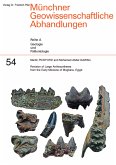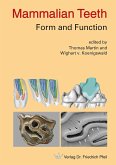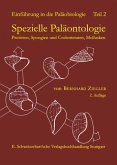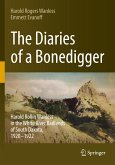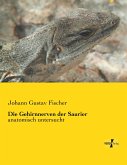The domesticated horses are really well-known animals. There are many studies of their husbandry, anatomy, evolution and biology. The horse has been admired and loved throughout the World. Although there are several studies of its anatomy by Schmaltz (1929), Ellenberger & Baum (1894-1901), Boas & Paulli (1908) and others, the knowledge is incomplete. Certain issues about their anatomy and evolution have not been studied in detail. The present study is not a literature review. It covers new information on three parts of the horse: 1 The nasal cavity anatomy and the anatomy of the preorbital area (p.¿9). 2 The dentition - mastication and tooth wear (p.¿85). 3 The anatomy and embryology of the forelimb and feet (p.¿111). These areas are relevant for the understanding of horse communication, diet, and locomotion. They are a contribution in development and evolution. They relate the horse to its ancestors. This study is inspired from the Samos Cremohipparion (Hipparion) proboscideum (Bernor et al. 2021). Two cranial specimens in particular stand out: the type in Bern and a female skull in Frankfurt (NHMBa C 5019 old 6; SMF 4709). These two specimens have fascinated me. They are so similar and yet so different form our modern horses. I wanted to do something for this species that no one else has done. I did not want to measure their fossae or their teeth. I did not want to do biostratigraphy. This study is devoted to how one can study the fossa, the diet and the anatomy of the tridactyl feet. What types of questions can be formulated and answered? How is the horse different today? What were the reasons of the observed changes? The study focuses on new ideas, observations and hypotheses and is not meant to be an exhaustive coverage of previous research. New anatomic and functional terms are introduced in this study. The study has many figures because I believe they help understand the anatomy better than simple text. All the figures are new. I emphasize that the figures are data. The figures are many and detailed. They reflect my personality as I think in images not words. I also know that we all love figures in studies and often skip over the words. The term domesticated horse or horse is meant to mean the domesticated horse Equus caballus. The three terms are used interchangeably throughout the text. Most of the research is based on the domesticated horse as this species was researched the most. Other species are mentioned by their scientific name. Equids refers to the taxa of the family Equidae. Equinae and Anchitheriinae are the two major subfamilies. I have selected some additional literature for further reading. I have also summarized the main points at the end of each chapter. A list of species and a list of terms in Latin are also provided at the end. In figures I use no abbreviations for the anatomical terminology. This greatly facilitates the use of the figures because it eliminates the step of having to look up what is been pointed. I use anglicized Latin [L] and Greek [G] in the text and figures as do most medical books (e.¿g. Gray's Anatomy 40th edition, 2008). During the later Cenozoic, especially in North America, there is a large adaptive radiation of extinct horses. Form the very beginning to the Oligocene there were numerous species. More than forty species were present in the Oligocene-Miocene of North America. Dinohippus is most likely the ancestor of Equus (the modern horses are all placed in one genus: Equus). Mihlbachler et al. (2011) provides a useful cladogram and the dietary evolution of equids. McFadden (1990) has also summarized the major evolutionary events of equids. Older studies on horses by Matthew (1926), Simpson (1951) and Osborn (1918) stand out as classics. The first part starts with a coverage of the anatomy of the conchae, the nostrils and the upper lip which act like a short proboscis, and the nasal diverticulum. The nasal notch is rather peculiar in the horse. There are nasalis muscles which are involved with the nasal diverticulum and with the sigmoid cartilage (or the medial accessory nasal cartilage). The study explores the buccinator fossa which is so misunderstood; it contains more than the buccinator muscle. I introduce the concept of the paraorigin where a muscle leans onto a bone to change direction. That leaning acts as a second origin. The nasal cavity is full of anatomical information. The nasolacrimal duct is not just a simple tube. The nasolabialis and the levator labii superioris are key muscles in inferring the structures of extinct equids. The preorbital fossa of the horse is covered in detail. One perplexing feature is the supernumerary sutures observed in bony preorbital fossae. The reddish color of the fossae of fresh specimens is another perplexing feature. The malar fossa is also described. Internally, there are two bony structures named pontis and tholos. There is also a thin wall deep to the fossa which is termed the murus reticulatus, as well as several other structures such as the oblique septum and the crista semilunaris. The anatomy of the lacrimal canal from the orbital direction is described. There are, in some horse specimens, fibro-fatty cushions in the fossae. The vomeronasal organ is described. A full-term donkey specimen reveals a complex membrane as part of the fossa. The air sacs are an interesting part of the auditory tube of the horse. After that the the books turns to the paleontology. Extinct horses vary in geologic age and size but I emphasize the preorbital fossa of their anatomy. Hyracotherium, Mesohippus, Merychippus, Protohippus, Pliohippus, and Cremohipparion are examined in detail. The discussion examines all the new discovered structures and the possible functions of them. Various authors are considered although much emphasis is placed on Gregory's (1920a) ideas of the preorbital fossa. This is followed by the embryology of the head. I emphasize the embryonic nasal capsule and what it may contribute to the preorbital fossa. Second to last there is a look into species to be compared to the horse. Tapirs are examined in detail as it is a close relative to the horses. These animals also possess fossae. The white-tailed deer provides some insights with its preorbital fossa. Cetacea are considered. The Indian elephant is also of interest with the fascinating anatomy of the proboscis. Elephants possess a single median nasal fossa but it has been largely ignored. Rabbits can also provide some insights as to the skull morphology of equids. Cotton tail rabbits have a fenestrated maxilla. It is in the same region where the fossil equids have the preorbital fossa. The Cetacea are also briefly examined. Finally there is a discussion of the probable functions of the preorbital fossae. The second part is about the horse dentition. Here the dentition is described and the structures are analyzed. Several tooth inclinations are described and their function is interpreted. The dental cementum of the horse is described. Deciduous dentitions are as in other mammals but there are also pseudo-deciduous dentitions. Being false they imitate in structure and position the true deciduous teeth. Two directions of chewing are considered. A geometry of tooth wear is briefly examined. A mutation on the dentition forms troughs, which may help in the cutting of tough grasses. The complexity of mastication is also examined. Extinct species differ in cementum distribution, not possessing the mutation for the troughs. Several theories of the effects of attrition and abrasion and tooth mesowear are examined. The third part is about the limbs. The distal limb of the horse was, until recently, perceived to be constructed with primarily digit three with the two splint bones on either side. This interpretation is revisited. I propose that the horse actually still possesses five digits merged together into one. All five digits are present but are only partially developed. The distal limb is like a tulip flower that has not opened yet, still all the petals are there. The evidence of this hypothesis is based on embryology and adult anatomy of the keratin, the bones and the fossils which are different and more primitive.
Hinweis: Dieser Artikel kann nur an eine deutsche Lieferadresse ausgeliefert werden.
Hinweis: Dieser Artikel kann nur an eine deutsche Lieferadresse ausgeliefert werden.




